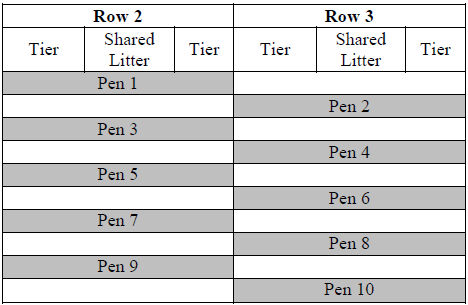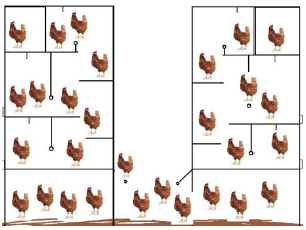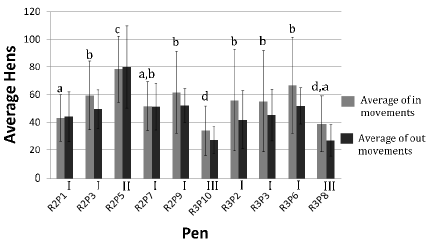



Litter Use in an Aviary Laying Hen Housing System
Litter use depended on the times and pen, according to Jessica D. Jenkins, Rebecca L. Parsons, Morgan Hayes, Hongwei Xin and Suzanne Millman in a report published in Iowa State University Animal Industry Report 2012.Summary and Implications
Litter use by hens was investigated by recording the number of hens moving to and from the litter in an aviary housing system. Findings showed a difference in litter use between different times and pens. These findings are being contributed as one component of a comprehensive assessment of an aviary laying hen housing system.
Introduction
The US egg industry is anticipating a change from conventional cage to cage-free housing systems. Aviary housing is a cage-free system that allows hens access to litter-floors, nest boxes and perches. The purpose of this project was to quantify litter usage and record the movements to and from the litter. These data will contribute as a welfare portion of a comprehensive assessment of aviary housing systems. The objectives were to determine differences in litter use between time of day and between pens.
Materials and Methods
All hens were housed in an aviary housing system. They were allowed into litter areas from approximately 11:30 until 21:00 hours. Hens were fed from 05:30-05:46, 11:00-11:16, 15:30-15:46 and 19:30-19:46 hours.
Video of laying hens was collected from 10 pens (figures 1 and 2) for behavioural observation. Cameras were placed in one pen at a time and rotated randomly through the 10 pens every two weeks. Ten minute sampling was used to record hen movement once per hour starting at 12:30 and ending at 20:40h for one to three days. In and out behaviours were recorded. In behaviour was defined as a hen going from litter floor or into the cage. Out behaviour was defined as hen going from cage onto the litter floor.


Results and Discussion
Data show that litter is used by hens. Differences were significant for time in relation to both in (P<0.0001) and out (P<0.0001) behaviours. Movements into the cage significantly increased during feeding times (15:30 and 19:30 hours) (Figure 3).

Differences were also significant between pens in relation to both in (P<0.0001) and out (P<0.0001) movements. Movements were significantly higher for row 2 pen 5 than other pens (Figure 4).

Other components of this comprehensive assessment are in progress and will be forthcoming.
Further Reading
| - | You can view other reports in the ISU Animal Industry Report 2012 by clicking here. |
February 2012








